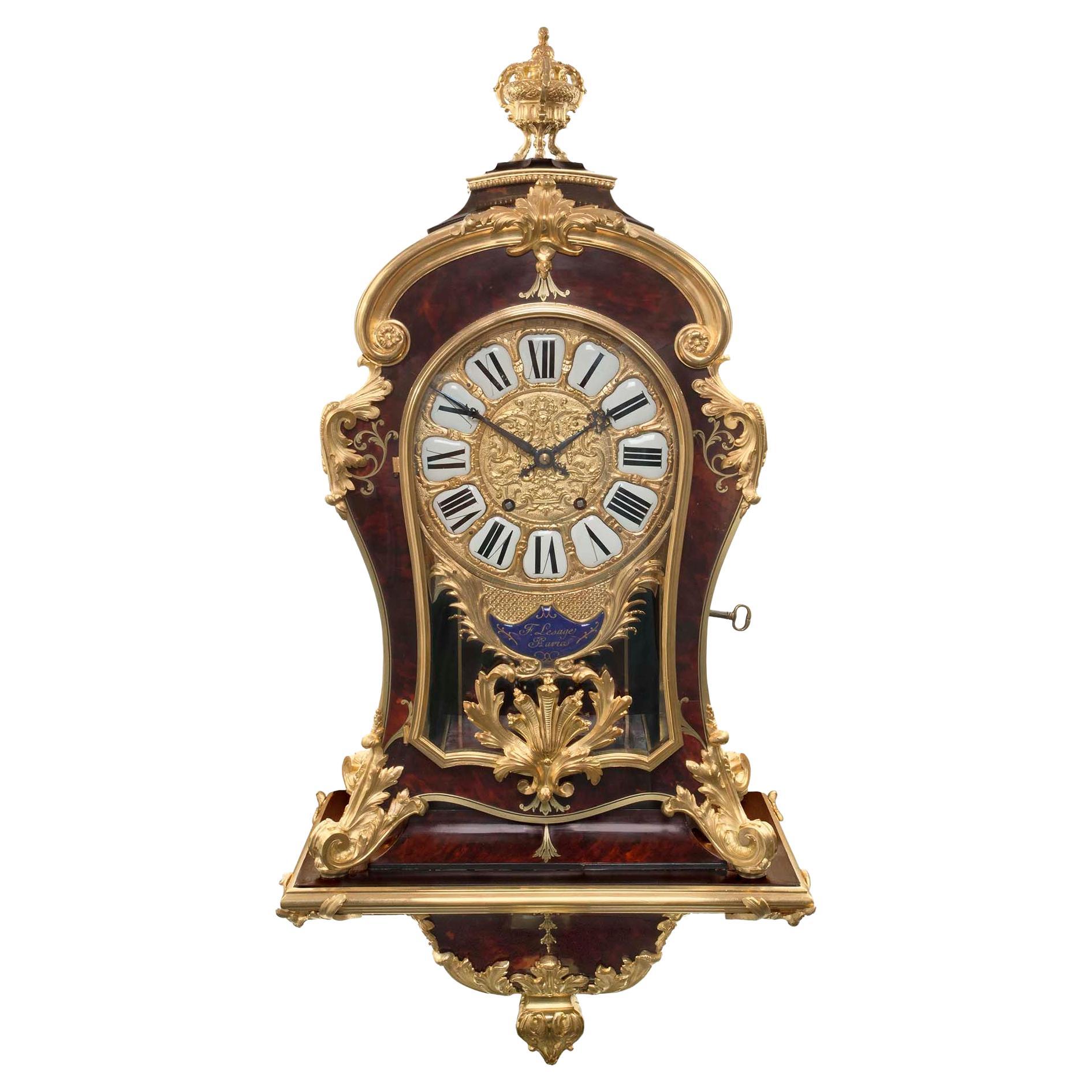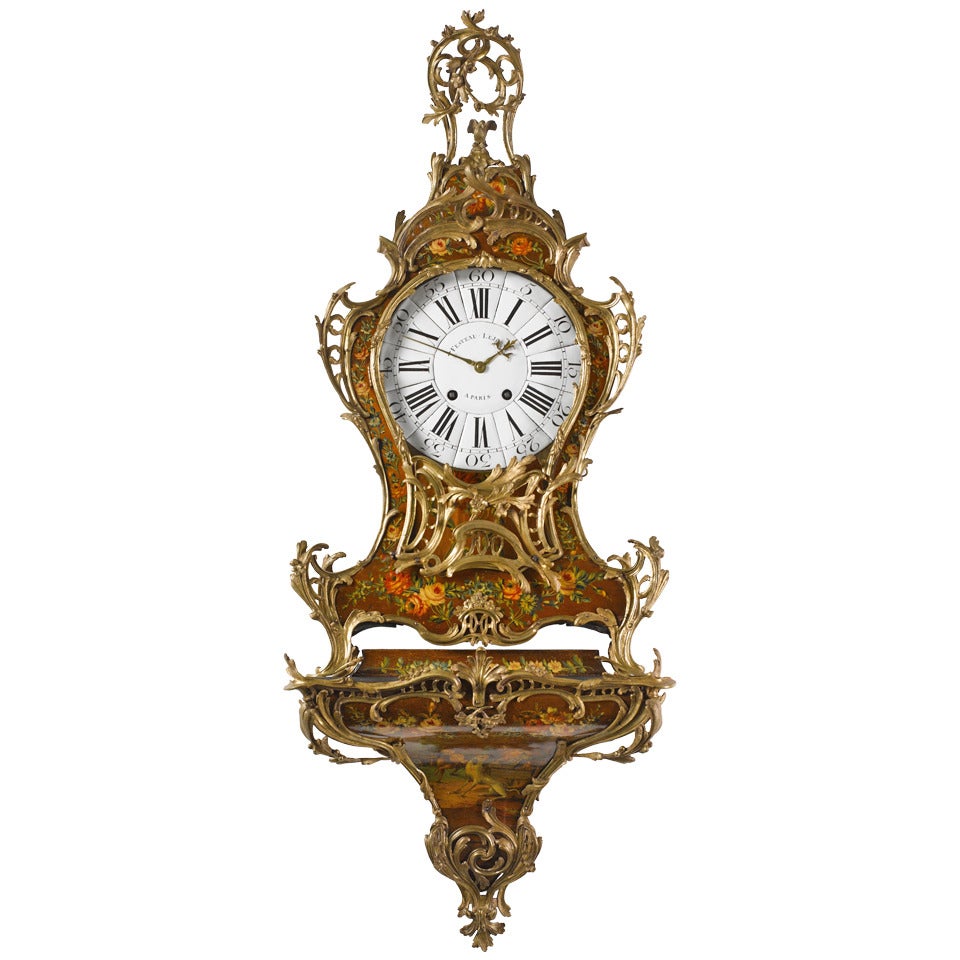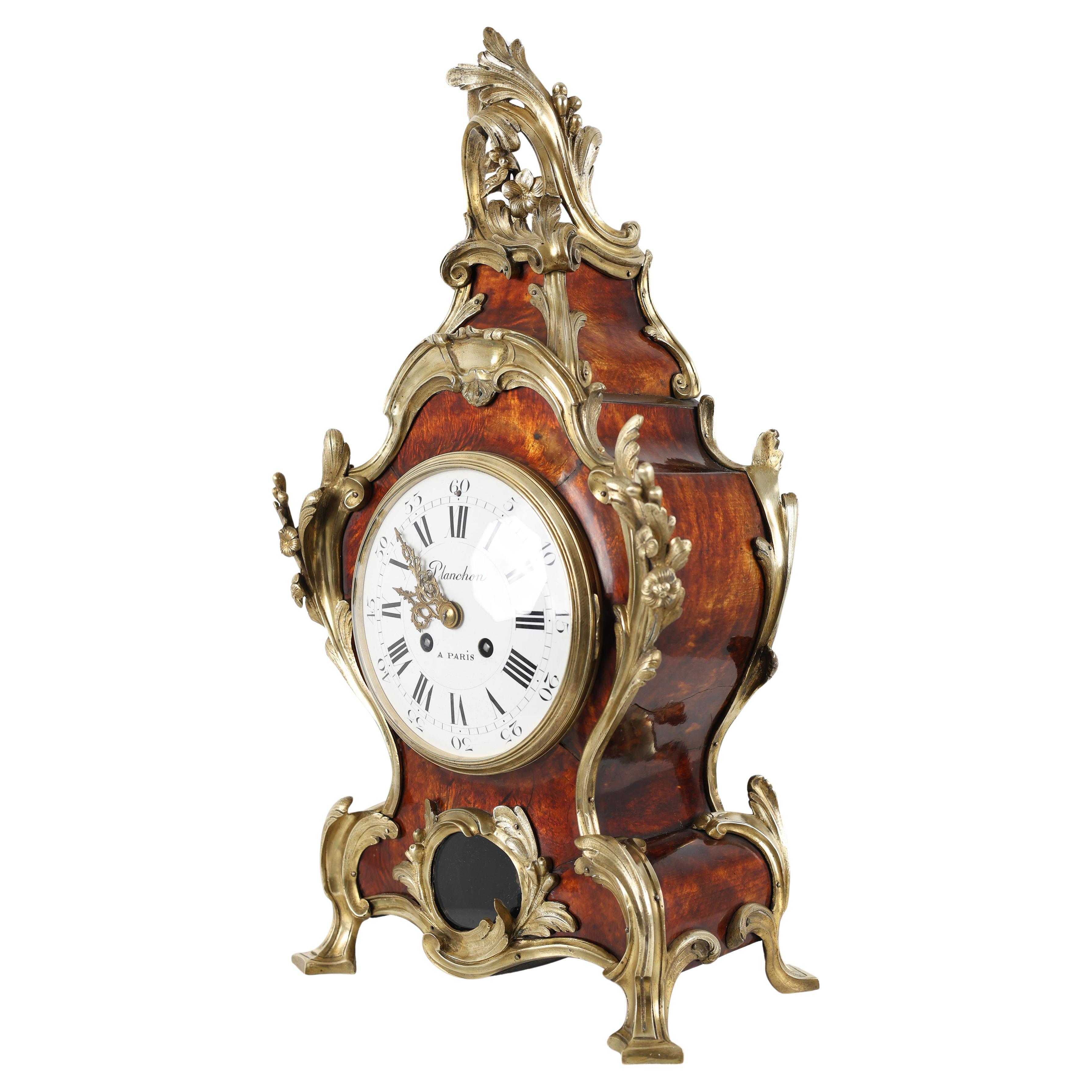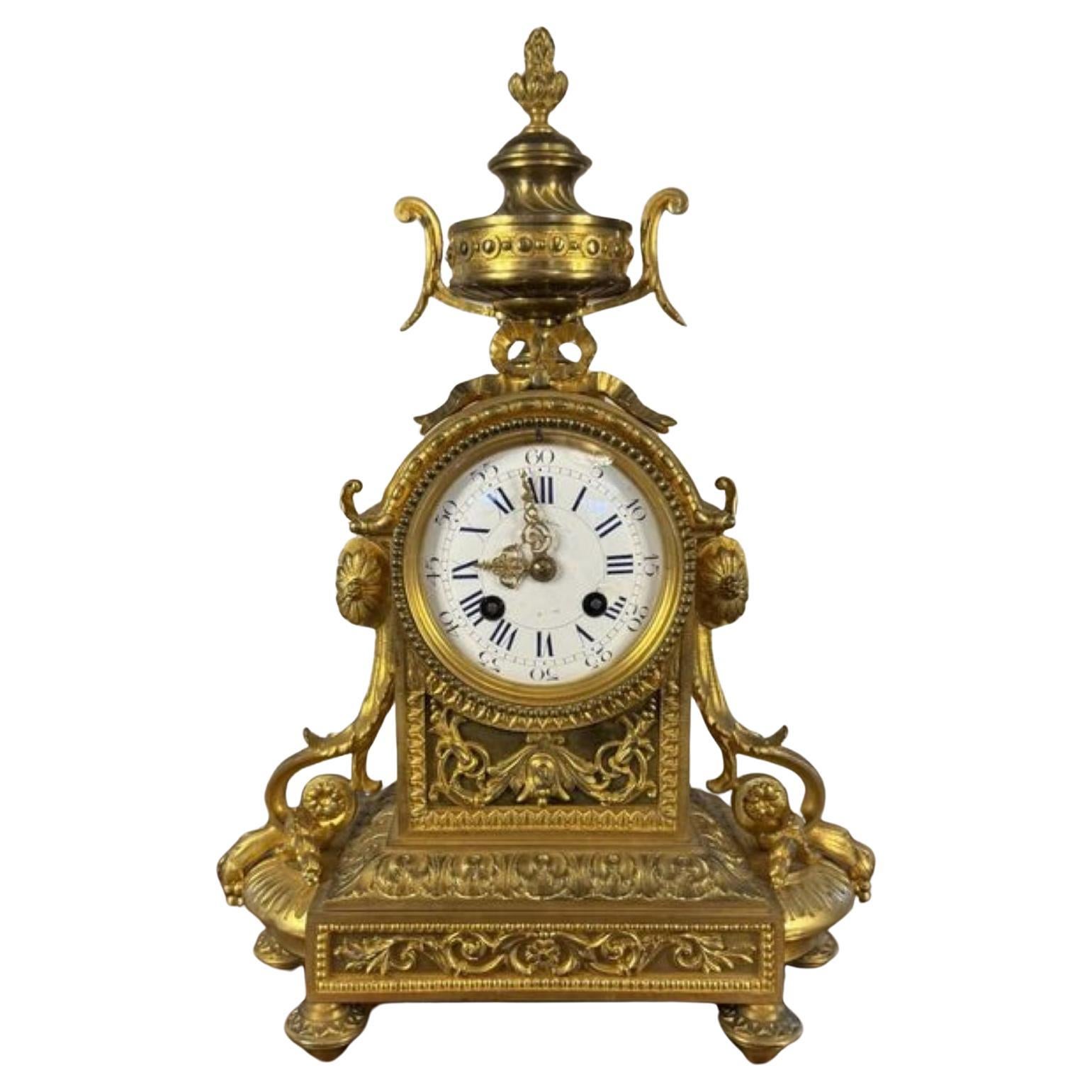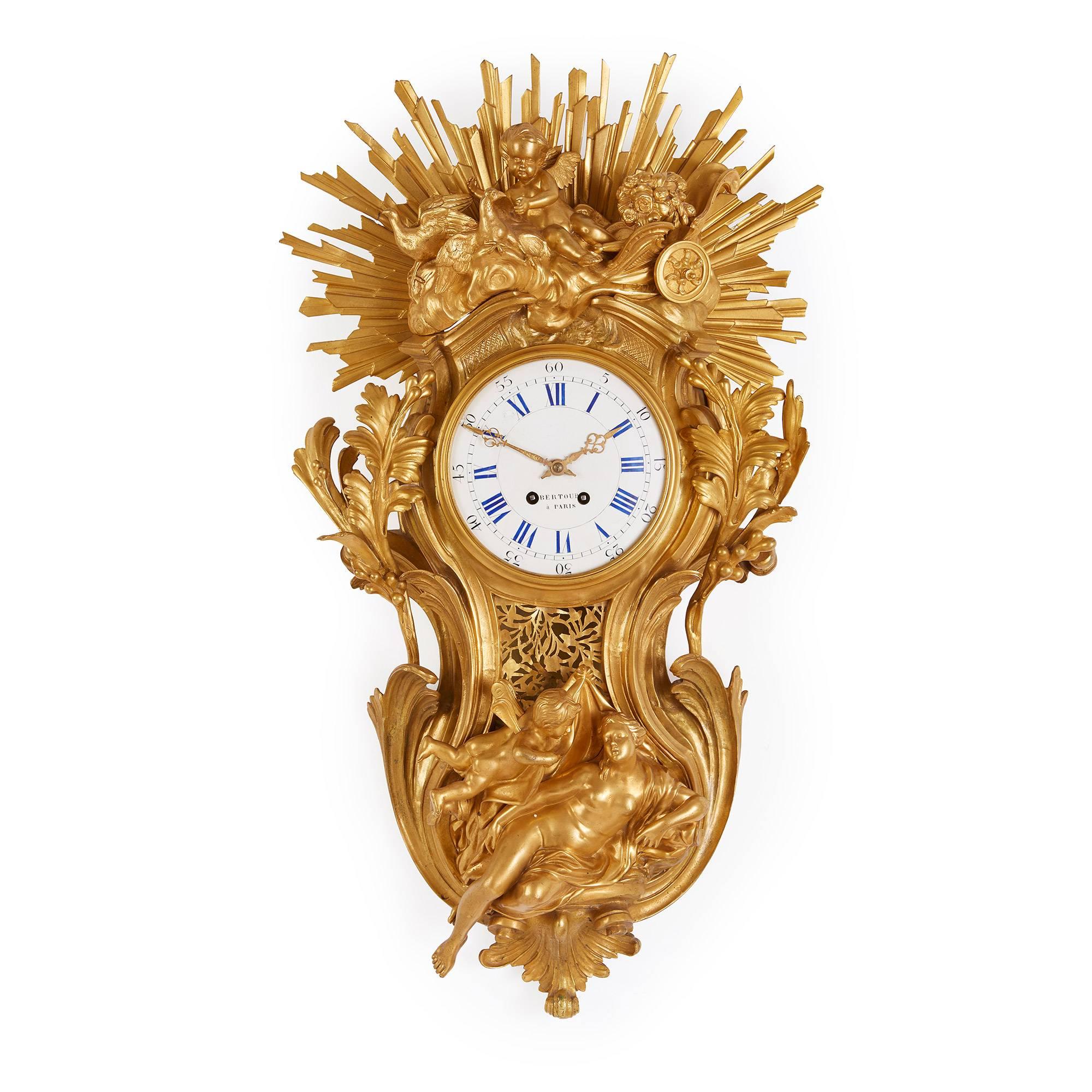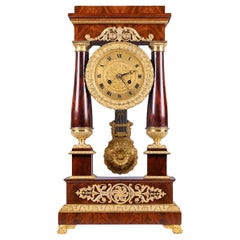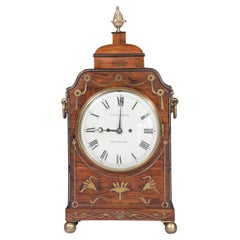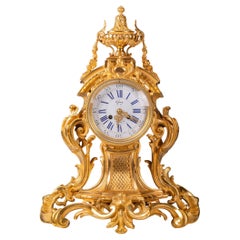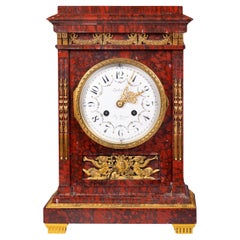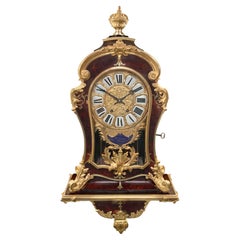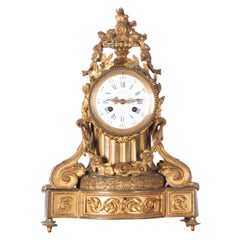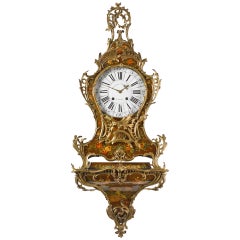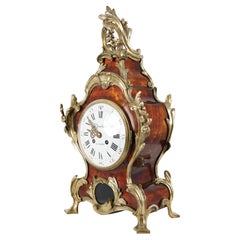Items Similar to Late 19th Century Mathieu Planchon Belle Epoque French Cartel Clock
Want more images or videos?
Request additional images or videos from the seller
1 of 6
Late 19th Century Mathieu Planchon Belle Epoque French Cartel Clock
$11,149.68
£8,477.68
€9,450
CA$15,596.45
A$17,022.16
CHF 8,940.46
MX$206,741.85
NOK 112,185.87
SEK 105,283.32
DKK 71,979
About the Item
A very fine late 19th century French Belle Epoque mounted bronze Dòre flame mahogany Cartel wall clock. The clock features a circular white enamel dial, which is inscribed with both Roman Numerals and Arabic Numbers. beautifully incised gilt hands and convex glass inscribed "Planchon A Paris".
Circa 1880
French
Mathieu Planchon apprenticed with his father, served several years with other clockmakers including Robert-Houdin and then went into business for himself eventually opening his shop at the Palais Royal in 1890. He was a skilled maker who was influenced by both earlier decorative trends and the ingenious clocks originally designed by Nicolas Grollier De Servierè that were illustrated in DeServierè’s catalog .
Antique cartel clocks
French cartel clocks, also known as "pendule de carton," are a type of wall-mounted clock that originated in France in the 18th century. They are characterized by their elongated and narrow shape, and their ornate and decorative style.
The French cartel clock first appeared in the early 18th century and became popular in the Rococo style of the mid-18th century. They were manufactured by clockmakers in Paris, who created them with a wide range of designs, from simple to very ornate. Cartel clocks were intended to be hung on a wall and were often used to decorate the interiors of homes, palaces and public buildings.
The clock's movement was usually made by one of the clock-making firms of Paris, and was fitted into the cardboard case. The most common clock movement was the French "pendule à balancier," which was an eight-day movement with a swinging pendulum.
- Creator:Mathieu Planchon (Clockmaker)
- Dimensions:Height: 33 in (83.82 cm)Width: 11.25 in (28.58 cm)Depth: 7 in (17.78 cm)
- Style:Belle Époque (Of the Period)
- Materials and Techniques:
- Place of Origin:
- Period:
- Date of Manufacture:1880
- Condition:Wear consistent with age and use.
- Seller Location:Dublin, IE
- Reference Number:1stDibs: LU5735241457722
About the Seller
5.0
Vetted Professional Seller
Every seller passes strict standards for authenticity and reliability
Established in 2006
1stDibs seller since 2021
9 sales on 1stDibs
Typical response time: <1 hour
- ShippingRetrieving quote...Shipping from: Dublin, Ireland
- Return Policy
Authenticity Guarantee
In the unlikely event there’s an issue with an item’s authenticity, contact us within 1 year for a full refund. DetailsMoney-Back Guarantee
If your item is not as described, is damaged in transit, or does not arrive, contact us within 7 days for a full refund. Details24-Hour Cancellation
You have a 24-hour grace period in which to reconsider your purchase, with no questions asked.Vetted Professional Sellers
Our world-class sellers must adhere to strict standards for service and quality, maintaining the integrity of our listings.Price-Match Guarantee
If you find that a seller listed the same item for a lower price elsewhere, we’ll match it.Trusted Global Delivery
Our best-in-class carrier network provides specialized shipping options worldwide, including custom delivery.More From This Seller
View AllEarly 19th Century French Empire Period Portico Clock
Located in Dublin, IE
A fine early 19th century French Empire period Portico clock of exceptional quality in the Neo-classical style, the clock housed in a richly figured mahogany case with four tapering ...
Category
Antique Early 19th Century French Empire Mantel Clocks
Materials
Ormolu
Early 19th Century English Regency Bracket Clock by T. & J. Ollivant
By Thomas Ollivant
Located in Dublin, IE
A very fine English regency period bracket clock with rosewood case, surmounted by a pineapple finial on a bell shaped caddy over a double steeped plinth . Substantial 8 Day twin fusee movement striking the hours on original bell. The 8? painted enamel convex dial...
Category
Antique Early 19th Century English Regency Mantel Clocks
Materials
Brass
A Large 19th Century French Ormolu Mantle Clock In The Rococo Style
Located in Dublin, IE
A fine 19th century and substantial ormolu clock, of Rococo balloon form, sweeping acanthus swags, scrolls and floral flourishes, which is topped by classical cornucopias. The clock ...
Category
Antique 19th Century French Rococo Mantel Clocks
Materials
Ormolu
Early 19th Century French Marble Clock signed "lefebure fres 5 rue Beranger"
Located in Dublin, IE
A very fine 19th century Rouge Griotte marble and gilt bronze clock in the Louis XVI style decorated with gilt bronze motifs, of rectangular form the painted floral porcelain white e...
Category
Antique 19th Century French Louis XVI Mantel Clocks
Materials
Griotte Marble, Ormolu
19th Century French Boulle Mantle Clock In The Louis XIV Style
Located in Dublin, IE
A fine 19th century Louis XIV style ormolu and brass Boulle style mantel clock, in the manner of Martinot of Paris, the eight day movement striking the half hours on a bell, with key...
Category
Antique 19th Century French Louis XIV Mantel Clocks
Materials
Brass, Ormolu
Late 19th - Early 20th Century Edwardian Longcase Clock By Maple & Co. London
By Maple & Co.
Located in Dublin, IE
A fine Edwardian inlaid mahogany longcase clock by Maples & Co., London, the finely proportioned case constructed from richly figured mahogany with satinwood crossbanding and marquet...
Category
Antique Early 1900s English Edwardian Grandfather Clocks and Longcase Cl...
Materials
Brass
You May Also Like
French 19th Century Louis XIV St. Cartel Clock Signed F.Lesage Paris
Located in West Palm Beach, FL
A stunning French 19th century Louis XIV st. tortoiseshell, brass and ormolu Cartel Clock signed F.Lesage Paris. The beautiful clock is raised on its orig...
Category
Antique 19th Century French Louis XIV Table Clocks and Desk Clocks
Materials
Brass, Ormolu
French 19th Century Mantle Clock
Located in Baton Rouge, LA
French metal mantle clock with ‘Boiscontier a Paris Rue De Caumartin’ printed on its face. The crest is a basket with elaborate foliate motif over a symme...
Category
Antique 19th Century French Other Wall Clocks
Materials
Metal
Rare French 18th Century Louis XV Vernis Martin Cartel Clock by Festeau le Jeune
Located in Worpswede / Bremen, DE
The clock case decorated overall with very fine ‘Vernis Martin’ lacquer paint with floral sprays and garlands. The waisted case with pierced foliate bronze mounts and surmounted by a foliate finial with a bird. On scroll feet, the bracked conformingly mounted and decorated with a scene with dogs. A fine three week going movement, striking half and full hours on a silvered bronze bell. Festeau Le Jeune became master in 1769. Clock case and bracket are stamped by the ebenist ‘A. Gosselin’ (Antoine Gosselin 1731-1794, Paris, master in 1752), as well as the stamp of the Parisian gilt ‘JME’.
In French interior design, Vernis Martin is a type of lustrous lacquer substitute widely used in the 18th century to decorate a wide variety of items from furniture and coaches to such personal articles as fans and snuffboxes. The technique was named after the French brothers Guillaume and Etienne-Simon Martin, who perfected the process, but covers work by other craftsmen as well. Highly praised by Voltaire, it was developed to imitate East Asian lacquerware...
Category
Antique 18th Century French Louis XV Clocks
Materials
Bronze
Exquisite 19th Century Mantel Clock – Planchon Paris
Located in Stahnsdorf, DE
Exquisite 19th Century Mantel Clock – Planchon Paris
This exceptional mantel clock, crafted by the renowned Planchon manufactory in Paris during the second half of the 19th century,...
Category
Antique 1890s French Napoleon III Mantel Clocks
Materials
Bronze
Fantastic quality antique Victorian French mantle clock
Located in Ipswich, GB
Fantastic quality antique Victorian French mantle clock, having a quality antique Victorian French mantle clock with a French eight day movement striking on bell, with circular ename...
Category
Antique Early 19th Century French Early Victorian Mantel Clocks
Materials
Brass
Large Belle Époque Style Antique French Ormolu Cartel Clock by Bertoud
Located in London, GB
This beautiful Belle Époque style Cartel clock is notable for its stunning depiction of a sunburst, which is depicted in vivid golden gilt bronze. The central circular enamel dial is...
Category
Antique 19th Century French Belle Époque Wall Clocks
Materials
Bronze
More Ways To Browse
Belle Epoque Furniture
Clock Radio Vintage
Clock Reverse
Eye Clocks
John Register
Outdoor Clocks
Tole Clock
Vintage Wall Mounted Clock
Advertising Clock
Antique Cuckoo Clocks
Antique Swedish Wall Clock
Green Wall Clock
Howard Miller Brass Wall Clock
Large Art Deco Wall Clock
Antique Banjo Clocks
Antique Clock Thermometer
Boulle Cartel Clock
Clock Seth Thomas
